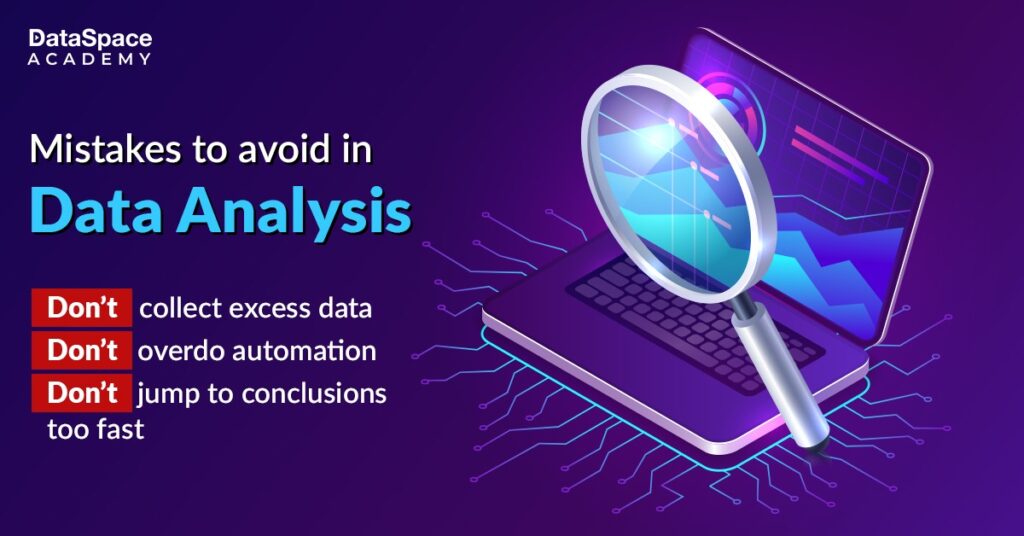Data mining and collection are like the assortment of spices and herbs in your kitchen. However, if you are unable to analyse their apt uses in different recipes, the results can be far from desirable. Similarly, heaps of data require precise analysis to yield useful insights that can drive business success. This is why data analysis is now at the forefront of the data-centered business landscape, driving growth with dependable accuracy.
In a time when businesses leverage data and analytical insights to steer their present and future plans, the role of data analysis is more than crucial. The intricate process of data analysis involves systematic collection, organisation, analysis, and interpretation of data to solve complex problems and make advanced business decisions. Remember, the right data analysis process can be a game changer for any business to lead the market graph - depending on the authenticity and quality of the data being extracted.
Businesses nowadays are investing a massive chunk of their funds in decking up their big data team to get an accurate pulse of market trends and consumer behavior. However, to ensure 100% perfection of the process, there is a set of certain Dos and Don’ts that professionals must follow. Let’s explore.
The volume of big data is expected to cross 180 zettabytes by 2025. Thus, every business needs to master the right big data analytics practices to ensure the optimum utilisation of vital data.

- Define clear objectives: To begin with, be sure of the purpose behind data analysis. You can either have paperwork with diagrams with objectives in your notebook or maintain an Excel sheet for the same. This is a crucial process to ensure the relevancy of your data collection and avoid irrelevant data collection.
- Verify data quality and authenticity: During data mining, be sure of the authenticity of the source and the quality of the data. The outcome of your data analysis depends greatly on the quality of the data you are mining to derive relevant insights.
- Get the right tools to your advantage: Simplify the process of data analysis by utilising the right tools that match your project purpose and intent. Get help from popular data analysis tools like Microsoft Power BI, Tableau, KNIME, and RapidMiner to name a few. Enroll in our industry-leading data analyst course to master the functionality of these advanced data analysis tools.
- Abide by the data privacy policy: Privacy guidelines are one of the core principles of the data analysis process. Therefore, it is crucial for professionals to stick to legal considerations and ethical standards. A law-abiding data analyst must apply ethical measures while accessing data from unauthorised sources or breaches.
- Implement the best data management practices: The ultimate task begins right after collecting the data, which is data management. You must organise your data efficiently to access it anytime you want.
- Deploy data visualisation tools: Make data analysis easier and more understandable by leveraging advanced data visualisation tools. Mastering Power BI and Tableau would help.
- Document your analysis process: Document the detailed process of the analysis to ensure maximum transparency of the process.

- Don’t gather excess data: Avoid collecting excessive and irrelevant data that is also time-consuming.
- Avoid overreliance on automation: Trust your honed set of data collection and analytical skills rather than relying solely on automation. Instead, use automation to your advantage strategically.
- Avoid jumping to conclusions: Don’t misinterpret data and rather thoroughly examine it for better understanding.
Data analysis is all about adhering to best practices for maximum accuracy, reliability, and integrity of your results. Start with a recommended set of research questions and use appropriate analytical methods for your data type. Additionally, verify your findings with statistical tests and visualisations for a comprehensive understanding of your data.
On the other hand, avoid cherry-picking data that supports your hypothesis, as this can lead to biased conclusions. Lastly, don't forget to document your process and findings for transparency and reproducibility. Hopefully, with our recommended set of dos and don'ts, you will be able to derive actionable insights from your data analysis.
Take your analytics career to the next level with our expert-approved
certification in data science.
Ans: The Dos include thorough data cleaning, using proper methods, and verifying results. The Don'ts include avoiding outliers and violating ethical rules.
Ans: A data analyst course encompasses data cleaning, visualization, statistical methods, and practical projects to gain real-world experience in data analysis.
Ans: By following best practices, such as using the correct methods, verifying findings, and avoiding confirmation bias during analysis.



